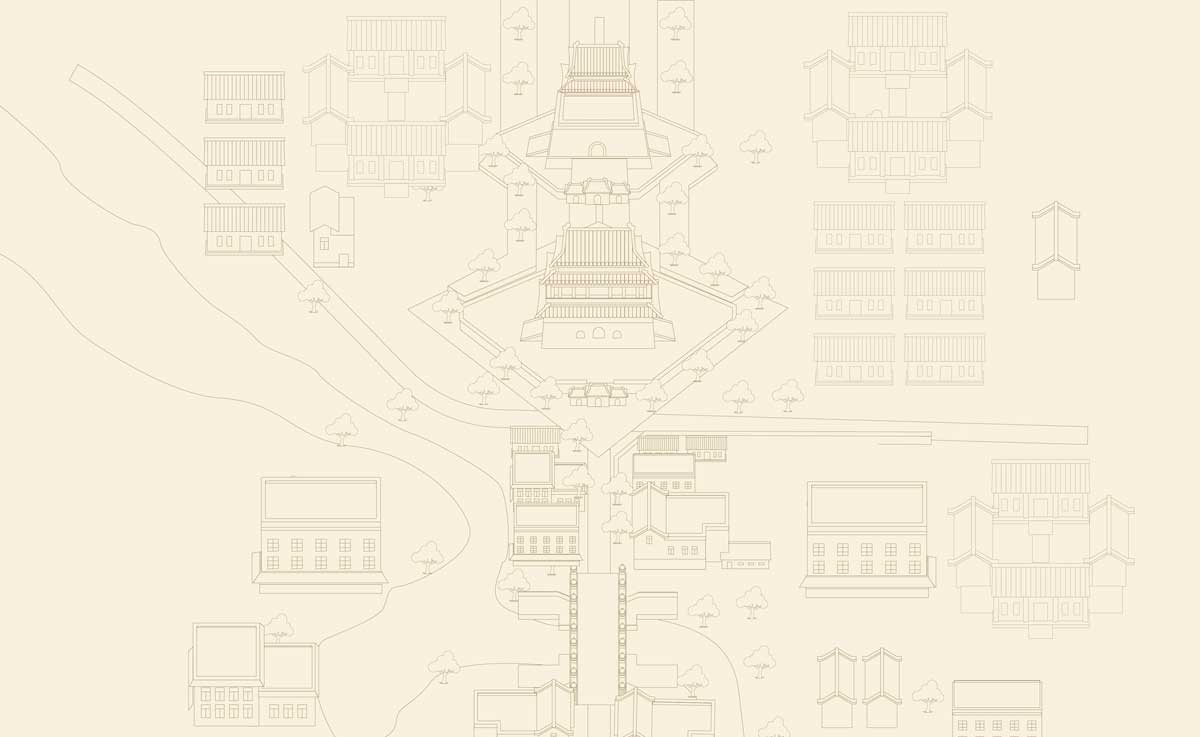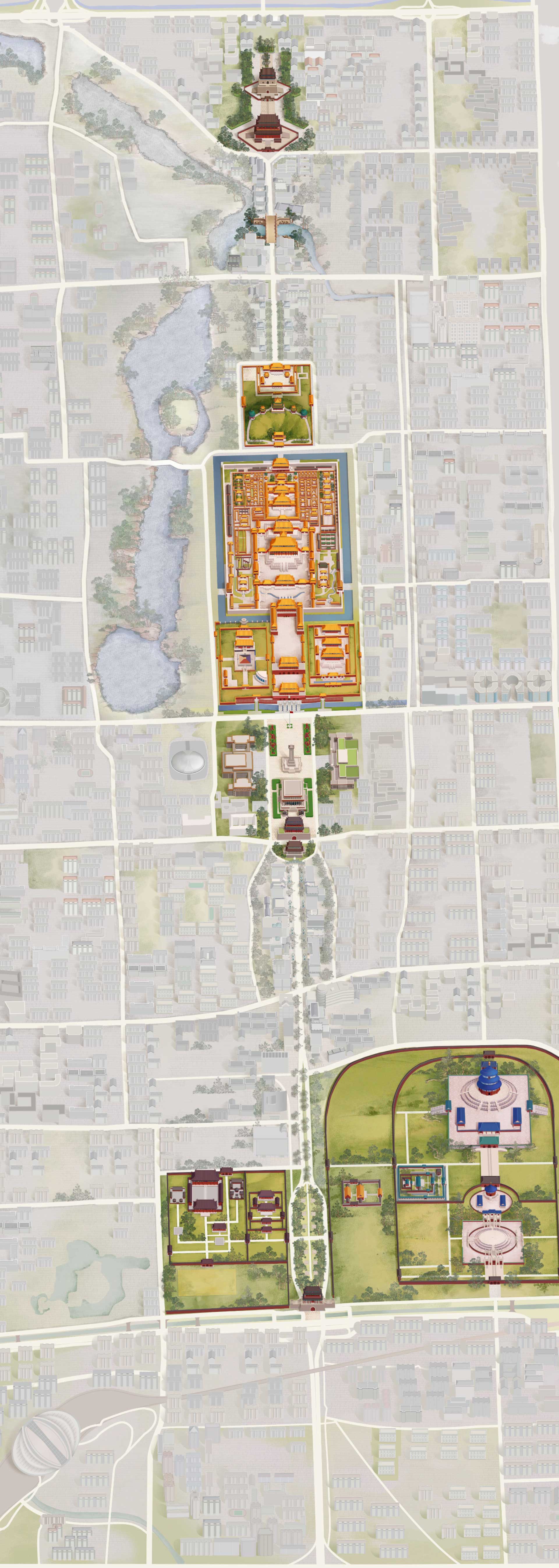Ancient Central Axis
A Building Ensemble Exhibiting the Ideal
Order of the Chinese Capital


Menu

Time-Space
Capsule






0%


No.1
Overview
Beijing Central Axis, running north-south through the heart of the old city of Beijing and governing the overall layout of the capital, is an ensemble of building complexes and archeological sites, comprising 15components.
View More >
>
No.2
Value
Beijing Central Axis bears the outstanding universal value underpinned by criteria (iii), (iv) and (vi).
View More >
>
No.3
Comprising Sections
The 7.8-kilometer-long cityscape sequence of Beijing Central Axis contains contrasts and variations in a harmonious and unified order. The layout is symmetrical with proportional modal relationships.
View More >
>
No.3
Comprising Sections
The Wanning Bridge, the towering Bell and Drum Towers, and commercial streets with a dazzling array of shops are combined to form the first spatial ensemble of Beijing Central Axis that extends from north to south.
View More >
>
No.3
Comprising Sections
The north part of the middle section concentrates the highest-ranking buildings of Beijing Central Axis, with shining glazed roof tiles and splendid building colors, to form the second spatial ensemble of Beijing Central Axis.
View More >
>
No.3
Comprising Sections
The flat and extensive Tian’anmen Square Complex in the south part of the middle section harmonizes with the overall traditional cityscape of Beijing Central Axis, forming the third spatial ensemble of Beijing Central Axis.
View More >
>
No.3
Comprising Sections
The southern section from the Zhengyangmen Gate to the Yongdingmen Gate forms the fourth spatial ensemble of Beijing Central Axis. In its north is a bustling commercial quarter, while in its south is the core area for emperors’ sacrificial and ceremonial activities during the Ming and Qing dynasties.
View More >
>
A cityscape sequence of magnificent buildings extending
from north to south
Core order line of the Central Axis





A testimony to the urban development and transformation of the ancient capital over seven centuries
Maintaining the urban layout that has survived to this day
Information on transformations of the central axis